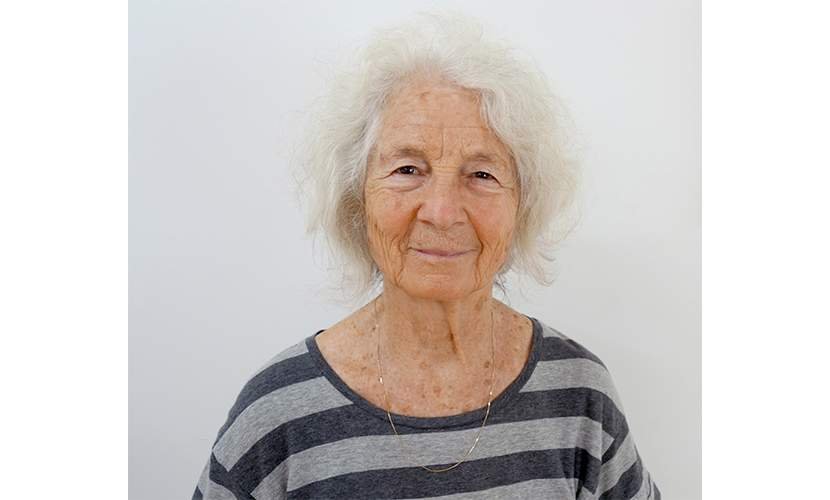Simone Forti
Photograph Source
From MoMA and Robert Rauschenberg Foundation
Simone Forti was born in Florence, Italy, 1935 and now Lives and works in Los Angeles. She began her career as a dancer in the mid-1950s when both she and Yvonne Rainer started taking classes in San Francisco with dancer and choreographer Anna Halprin. Forti’s teacher and mentor was embarking on the exploration of a new form of contemporary dance that rejected the structured choreography of modern dance in favor of improvisation and everyday movements. Taking Halprin’s revolutionary technique as her touchstone, Forti relocated to New York in the early 1960s. There she developed her own approach, rooted in improvisation and natural movements, which has influenced her contemporaries and generations of younger artists.
In New York, Forti was working alongside and had close friendships with the choreographers who founded the groundbreaking artist collaborative known as the Judson Dance Theater, among them Rainer and sculptor Robert Morris. At Yoko Ono’s loft in 1960, she debuted her Dance Constructions, so called, as she has explained, because they are “dance[s] but [they] also can be seen as sculpture[s] made of people.”1 Improvisation and chance shape the individual works that together comprise the Dance Constructions, which are characterized by understated, shifting movements, sounds, and formations. Among them are Accompaniment for La Monte’s “2 sounds” and La Monte’s “2 sounds”, Platforms, and Huddle.
Celebrated as a pioneer of improvisational dance, Simone Forti is known as a teacher and a performer. Her work draws from ordinary movement, animal studies, natural forms, chance, and simple objects, eschewing traditional technique in order to challenge and expand the boundaries of dance. Early in her career, Forti studied with the renowned choreographer Anna Halprin in San Francisco (1955–59). She moved to New York in 1959, where she studied composition with Robert Dunn at the Merce Cunningham Dance Studio—Dunn’s classes soon formed the basis for the highly influential Judson Dance Theater. Forti met Rauschenberg in the 1960s and performed in his Linoleum (1966), Open Score (1966), and Urban Round (1967). Forti’s accolades include six fellowships from the National Endowment for the Arts and a John Simon Guggenheim Memorial Foundation Fellowship for choreography in 2005. She is the author of Handbook in Motion (1974) and Oh, Tongue (2003), and she writes regularly for Contact Quarterly dance journal and the Movement Research Performance Journal.

